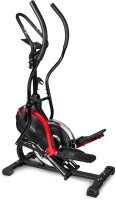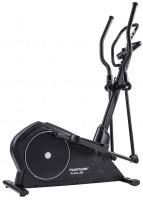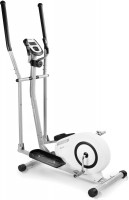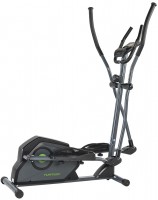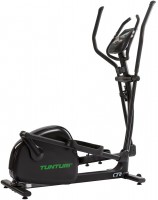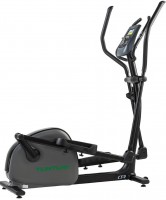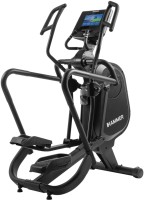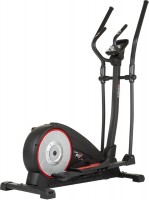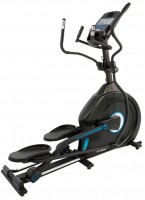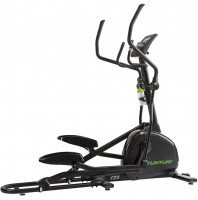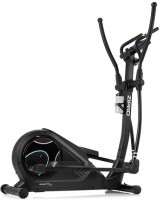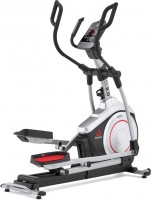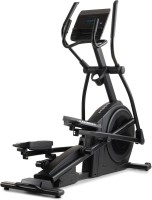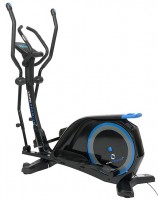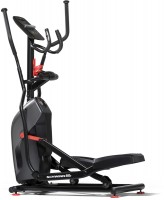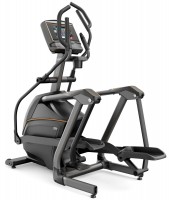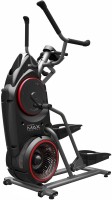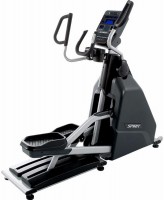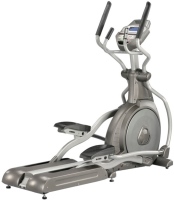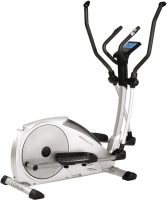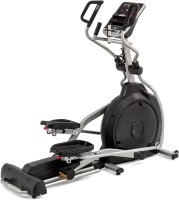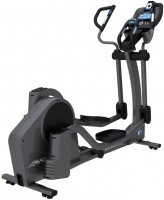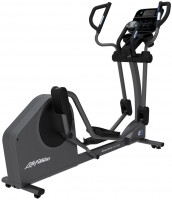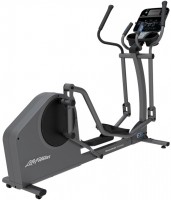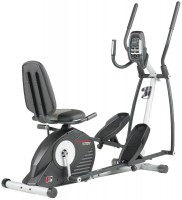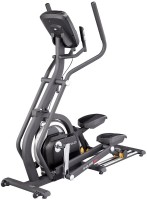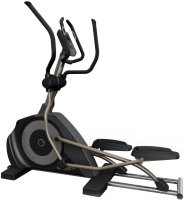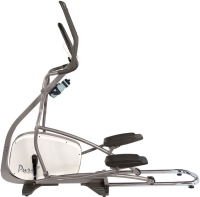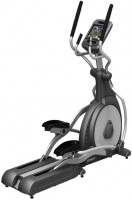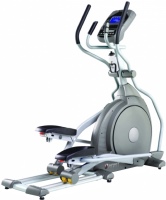Safe cardio at home: how to choose an orbitrek
We independently test the products and technologies that we recommend.
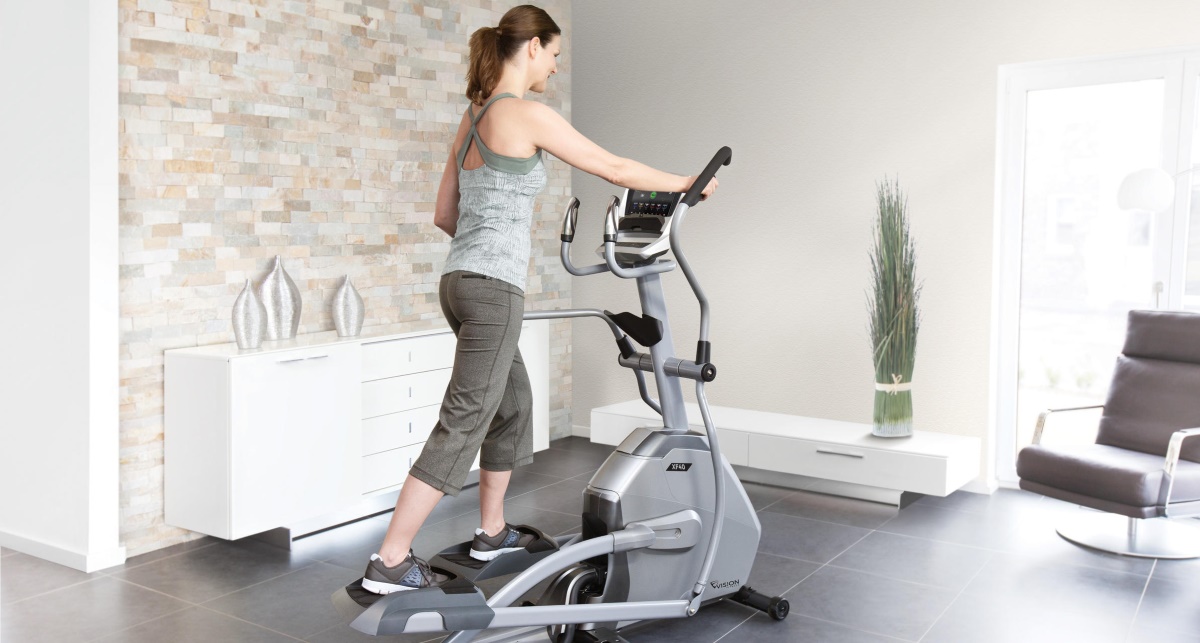
Why the elliptical simulator itself?
Orbitreks (also known as elliptical simulators or ellipsoids) simulate several types of cardio loads at once, combining the capabilities of a treadmill, stepper and exercise bike. They strengthen the muscles of the legs and the whole body, help with weight loss.
 |
| And running, and skiing, and cycling. |
The popularity of orbitreks is added by such advantages over other cardio equipment:
- Minimal impact on the joints. The ellipsoid simulates running, but with less stress on the knees than the tracks. Against the background of exercise bikes and steppers, there is also a more gentle effect on the knee joints.
- Versatility. The main load on the orbitreke falls on the muscles of the legs and buttocks, but the upper part of the body is also seriously involved here: arms, shoulders, chest, abs.
- Compactness and relative manoeuvrability. Ellipsoids take up less space than treadmills. In addition, they are usually lighter, so that orbitreks with transport rollers are easier to move.
Such advantages do not go unnoticed. And more and more people are interested in how to choose an elliptical trainer for home.
Let's get to know the brands
The main manufacturers of orbitreks can be divided into two groups:
- companies that produce mainly home models (HouseFit, Torneo, USA Style, Body Sculpture). Their simulators are usually cheaper, in functional terms they are simpler products;
- brands with a worldwide reputation, known for their professional products, but offering more "simple" versions for the home (Kettler, Spirit Fitness, Nordic Track). The cost of such models is higher, but the quality and functionality usually corresponds to the price.
By identifying suitable manufacturers, you can narrow down the search. But a general understanding of which elliptical simulator to choose gives other important criteria.
Let's define the load system
The most popular classification feature of ellipsoids is the type of load. It determines how resistance occurs on the flywheel of the simulator and is transmitted to the student. Today , according to this criterion , such orbitreks are distinguished:
 |
| Mechanical orbitrek. |
1. Mechanical. The simplest system in which special pads are pressed against the flywheel and create the necessary resistance to rotation. The tighter the contact, the harder it is to pedal.
Positive:
- low price;
- energy independence;
- wide variability of loads, up to very significant.
Cons:
-
- noisy work;
- lack of smoothness in movements and uneven loads;
- wear of the pads.
Mechanical orbitreks2. Magnetic. The resistance changes by changing the position of the magnets (removing or approaching the flywheel). The closer they are, the harder it is to pedal.
Positive:
- energy independence;
- smooth movement;
- pretty quiet work;
- simple load adjustment.
Cons:
- a small maximum load (for professional athletes, such orbitreks are not suitable).
Magnetic orbitreks3. Electromagnetic. The system is close to magnetic, but instead of moving elements, fixed electromagnets are used here, which are supplied with current. The stronger it is, the more powerful the magnetic field and the greater the resistance the student needs to overcome.
Positive:
- silent operation;
- the best smoothness of movement;
- precise and convenient adjustment of loads.
Cons:
- dependence on power supply;
- high price.
Electromagnetic orbitreksFirst of all, the low-cost will help you decide which orbitrek to choose for home use. But since mechanical models are not comfortable for both the student and his environment (due to noise), the optimal solution with limited finances will be a magnetic ellipsoid. Electromagnetic orbitreks used to be positioned as professional, but today even among them there are compact and not too expensive versions for the home.
Let's deal with the design features
The load system is not the only design element that is taken into account when choosing an orbitrek. Other important aspects include:

The weight of the flywheel determines the smoothness of the stroke. - The weight of the flywheel. It directly affects the comfort and smoothness of the ride. The heavier the flywheel, the more evenly the load is distributed, the lower the probability of jerks during movement and the more pleasant the training process. But there is also a minus — the simulator becomes more cumbersome and less manoeuvrable. Therefore, models with a flywheel from 8 to 10 kg are usually taken for the house.
- Step length. The parameter affects the load and convenience. The longer the step length, the more calories are consumed, but the pursuit of an increase in the indicator leads to discomfort and even injury. When choosing the optimal value, they are based on the growth of the student. Low users (up to 170 cm) will have a length of 30 – 35 cm, high users (more than 190 cm) will fit a step larger than 40 – 45 cm, and everyone else — from 35 to 40 cm.

The correct choice of the step length is the basis of convenience in the operation of the orbitrek. - The weight for which the ellipsoid is designed. Ideally, you need to buy a model with a margin of 20 kg (weigh 90 kg, choose a 110 kg model). This will give additional reliability and durability.
We will select the necessary functionality
To choose an orbitrek for a house that fits all your tasks, pay attention to the following points:
- Additional structural details. These include, for example, a seat that turns the model into an exercise bike. Useful options are the adjustment of handles and pedal platforms, a folding design for convenient storage, compensators for floor irregularities.
- Load levels. The more of them, the more accurately the training on the ellipsoid is configured and the lesson itself is more interesting. But this factor also directly affects the price of the simulator.
- Management method. It can be manual (there is a handle for switching loads) and electronic (with buttons and even a display).

Informative display allows you to control the training process. - Training features. Models with electronic control often have a built-in computer with a different set of functions. It allows you to select available and create personal training programs, test the level of current athletic training, control time, speed, and approximate calorie consumption. There are also orbitreks with pulse measurement, which are useful for both professional athletes and people with cardiovascular diseases. Again, the "smart" device is more expensive, and not all functions are subsequently used.
- Additional "chips". These include the presence of a fan and a holder for a water bottle, speakers and a USB port, an Internet connection, etc.
Having decided on all this, it remains to choose a suitable orbitrek and practice on it with pleasure.
See also:"Golden mean": 5 tablets with an 8-inch screen size
A selection of models that are equally well suited for a wide variety of use cases.Driving from an early age: TOP 5 children's electric cars
The first serious self-propelled transport for little fidgets.Style Icons: TOP 5 Smartphone Mods
In the era of identical smartphones, we have selected for you 5 of the most stylish solutions on the market.Five functional electric stoves with a width of 60 cm
Advanced models of electric stoves with a grill, convection and a glass-ceramic hob.We cut, chop and even cook soup: how to choose a blender for home?
Learn how to choose the right blender and attachments to it.


